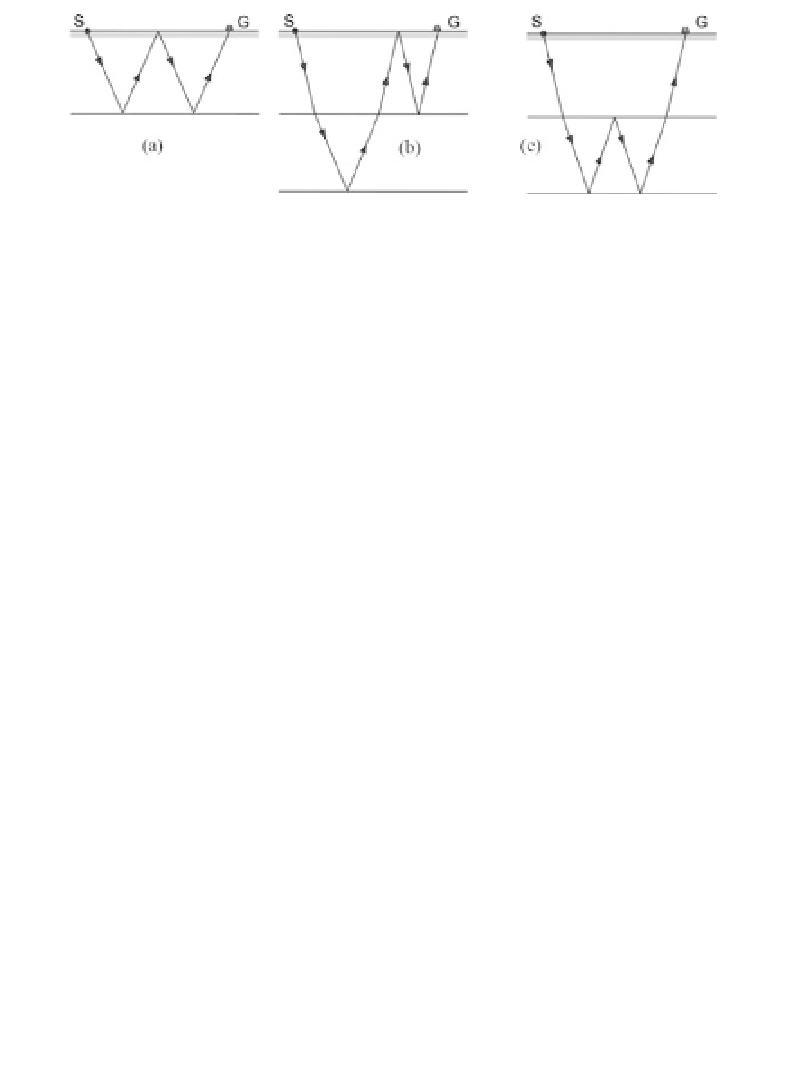Geology Reference
In-Depth Information
Figure 12.4
Multiple reflections. (a) Simple multiple. (b) Peg-leg. (c) Intra-
formational multiple.
moveouts appropriate to shallow reflectors and simple time relationships
with their primaries. For example, the arrival time of the simple multiple in
Figure 12.4a is approximately double the arrival time of the primary.
12.2 Reflection Surveys
Reflected waves are never first arrivals, so clear-cut reflection events are
seldom seen. Oil-industry techniques for improving signal-to-noise ratios
can now be also applied in shallow work, and simplified versions of the pro-
grams used are incorporated in the software supplied with the latest gener-
ation of 12- and 24-channel seismographs.
12.2.1 Spread lengths
The distance from the source to the nearest geophone in a shallow reflection
survey is usually dictated by the strength of the source (and the need to
protect the geophone) and may be as little as 2 m when a hammer is being
used. Even with explosives or heavy weight drops, minimum offsets of more
than about 10 m are unusual when observing shallow reflections.
A reflection spread can be much shorter than a refraction spread used
to probe to similar depths, but with powerful sources and multi-channel
recording, the furthest geophone may be more than 100 m from the source.
The optimum spread length can be determined only by experiment, since
the most important factors are the arrival times of the noise trains associated
with the direct wave and any strong refracted waves. Field work should
begin with tests specifically designed to examine these arrivals, generally
by using elongated spreads.
12.2.2 Arrays
Ideally, reflected energy should not arrive until after the direct wave, ground-
roll and refractions have passed, but this may not be possible if the depth
of investigation is very small. In such cases, several geophones may be
connected to each recording channel in arrays. Reflected waves, which travel

